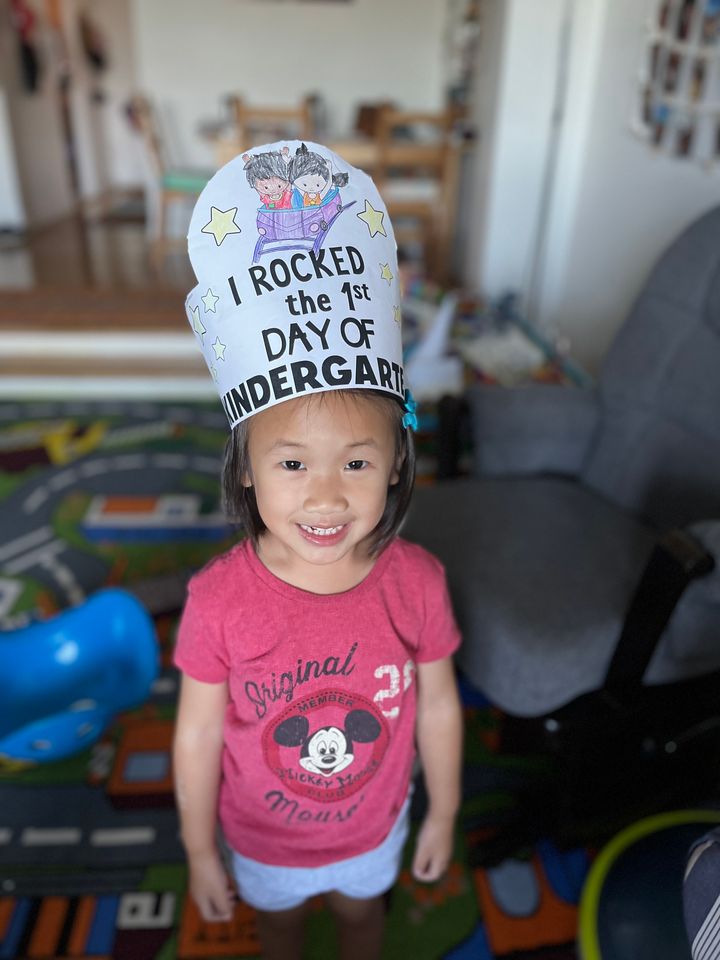Helping Your Child with Visual Sensitivities
Discover how to create a comfortable environment for your child with sensory sensitivities. Learn to recognize and accommodate visual triggers. Explore practical tips for minimizing overstimulation and fostering focus.

Rounding out the senses for Sensory Processing Awareness Month, today we're going to talk about visual sensitivities. Over responsiveness to sight or visual stimuli in children can manifest in various ways, and it's essential to recognize and accommodate these sensitivities to create a comfortable environment for your child to thrive. Here are some common triggers and strategies to help your child cope with visual sensitivities.
🖐 Touch and Tactile sensitivity
👂 Sound sensitivity
👃 Smell & Taste sensitivity
⭐️ Sensory Seekers & Undersensitivity
Common Visual Triggers for Sensory Sensitive Children
Kids with visual sensitivities may react to different things in their own unique way, but what those with over responsive sensory systems share in common is these triggers will cause them to quickly become overstimulated. Some common triggers for them are bright lights, like those intense overhead ones, or flashing lights. Bright colors and moving images from video games and the flickering TV shows or movies may delight the average child but prove to be overwhelming for a sensory sensitive one.

Coping with Bright Light
If you find your child experiences discomfort with bright light or fluorescent lighting, consider these strategies to support their comfort and well-being:
- Dimming Lights: Opt for dimmer lighting in your home to create a more visually soothing environment. Using lamps can be less visually stressful than overhead lighting.
- Natural Light: Whenever possible, use natural light sources to reduce the need for artificial lighting. Soft, warm light bulbs may be preferred over bright white fluorescent.
- Sunglasses and Hats: When entering a space with much stronger lighting or sunlight, you can offer sunglasses or a wide brimmed hat, and help them mentally prepare before entering that new environment.
This article contains affiliate links to products I feel good about endorsing, meaning I may earn commission from qualifying purchases. Check disclaimers for more info.
Preference for Dark Environments
If your child prefers spending time in dark environments or turning off lights, consider these tips:

- Safe spaces: Place your child's favorite chairs or cushions in darker areas of the room, away from windows and light sources. Play tents or privacy canopies on their beds can create a safe, dark retreat. Large canopies on strollers can provide a break from visual stimuli when out and about.
- Sunglasses: Allow your child to wear lightly tinted sunglasses when you have less control over the environment or maintaining darkness is not practical for them or others.
- Gradual transitions: Install dimmer switches in your home so that the level of light can be gradually increased and acclimated to.
Minimizing Visual Distractions
If your child is easily distracted by visual stimuli in their environment, these are some steps you can take to help them focus:
- Go Minimalist: Reduce visual distractions by keeping the home clutter-free and organized. Limit the amount of visual material on walls or ceilings.
- Distraction Free Zones: Arrange your child's seating and work spaces to face away from doors, windows, and colorful displays.
- Limit Screen Time: Reducing screen time can help prevent visual overstimulation in your child. Set timers for previously agreed upon limits and be ready with some screen-free activities to give their eyes and brains regular breaks.
Support at School
Work in partnership with your child's teacher to implement some of these strategies to help them thrive in the classroom.
- Less is More: Provide clutter-free, organized workspaces.
- Front Row: Seat the child near the board for easier visibility and less visual distractions between them and the board. Provide written materials for reading and copying instead of off the board if possible.
- Tools for Focus: Visual aids such as finger pointers, rulers, or typoscopes can help with reading and copying.
- Classroom Materials: Opt for large-print books and worksheets that make good use of white space and avoid having unnecessary visual information on the page.
Difficulty with Eye Contact
Making eye contact can be a bit tricky for a whole bunch of reasons. "Looking someone in the eye" means taking in all the visual stimuli of facial expressions, eye movements, and body language which can quickly be anxiety-inducing for those with visual sensitivity.
- Connect in Other Ways: Avoid pushing them into eye contact, as that can just stress them out more and make it harder for them to think clearly and pay attention to what you're saying. It's nice to keep in mind that your child could be completely absorbed in what you're saying, even if they're not making that direct eye-to-eye connection. You can always check if they're tuned in by having them repeat or paraphrase what you've said, or maintain a gentle connection by lightly touching their shoulder or arm while you chat with them. It's all about finding those unique ways they engage and communicate.
- Eyes Up Here: Have them practice focusing on something near the eyes, like the nose or hairline when speaking with others. It's a small adjustment that can make a big difference in their comfort and confidence.
I'd love to hear your thoughts and experiences with visual sensitivities – please share your stories and strategies in the comments below. Let's continue to learn and grow together as we support our extraordinary children on their sensory journey!




Comments ()